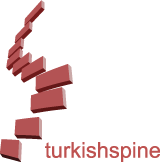ABSTRACT
Spina bifida occulta (SBO), transitional vertebral anomalies such as lumbarization and sacralization, and scoliosis, are structural and functional anomalies that can be detected during radiological evaluation of the lumbar region. The purpose of this study is to evaluate the incidence of lumbosacral deformities in a young male Turkish population.
5000 young male candidates between 18– 22 years old were included in this study during their medical screening in Etimesgut Military Hospital, during November 2008–October 2009. Lumbosacral vertebral X-rays that were ordered in the routine medical screening were evaluated. The X-rays were examined for common congenital lumbosacral anomalies (CLA), such as spina bifida occulta, transitional vertebrae (lumbarization, sacralization), and scoliosis.
Congenital lumbosacral anomalies were detected in 952 (19%) of the 5000 candidates. Of those candidates, 510 (10.2%) had SBO, of which 74 (1.5%) had L5-originating SBO and 436 (8.7%) had S1-originating SBO. Sacralization was observed in 222 (4.4%) candidates, and lumbarization was found in 59 (1.2%) candidates. In 128 (2.5%) candidates, lumbar and/or lumbar-elongated scoliosis was detected. Combined anomalies were detected in 33 (0.7%) candidates.
Our data show similarity with the current literature on congenital lumbosacral anomalies. Although our study was limited to a young male population, our data will be a useful guide for further studies on lumbosacral region anomalies.



